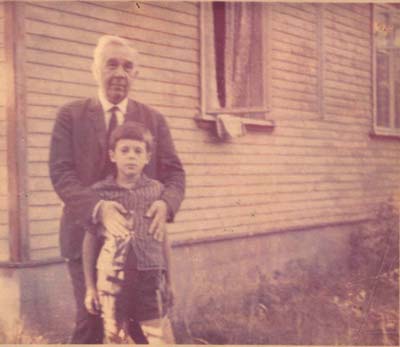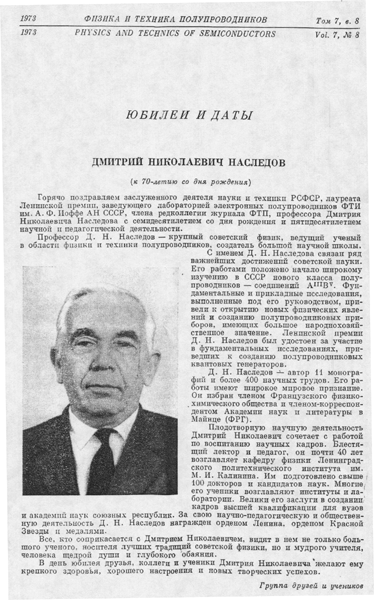Dimitry Nikolaevich Nasledov was a great man. He was my great-grandfather. He was born August 12, 1903, in Kiev, Ukraine. During his life, he had accomplished many things.
|
D.N. Nasledov finished Kiev University in 1924. For 6 years, he worked at the Ukraine Institute of Radiology. In 1930, he came to Leningrad (now St. Petersburg) and began working at the Leningrad Institute of Physics and the Polytechnic Institute. For years, he worked with electron semiconductors. He was experimenting with semiconductor elements combined from AIIIBV such as Arsenic-Gallium. |
Dimitry Nasledov was one of the fathers of the semiconductor laser. The discovery of the laser was in Spring 1961. For this discovery, my great-grandfather was awarded the Lenin's prize in April 22, 1964. Lenin's prize is the highest award possible for a scientist and it is given only on April 22 because that was Lenin's birthday. His works were widely recognized and respected in European countries like West Germany, France, and England, where he was invited to lecture. He was the Fellow of the Germany Academy of Science and Literature and the French Academy of Chemistry and Physics.
Dimitry Nasledov wrote eleven monographs and more than six hundred articles for scientific journals. He made many other discoveries in the field of semiconductors but none were as important as the discovery of the semiconductor laser. Some of his later accomplishments were a computer model of the Gunn diode and research on the magnetic field influence on the Gunn effect.
Dimitry Nikolaevich Nasledov spent most of his life in Communist Russia (USSR). His life spanned from when airplanes and cars were just invented, to World War I, to the Russian Revolution, to World War II and the siege of St. Petersburg, and the space race.
His students loved him and it was said that Dimitry N. Nasledov was the best lecturer in all of St. Petersburg. He was the scientific advisor of more than one hundred Ph.D. projects conducted by his students, many of which later became prominent physicists known all over the world.


